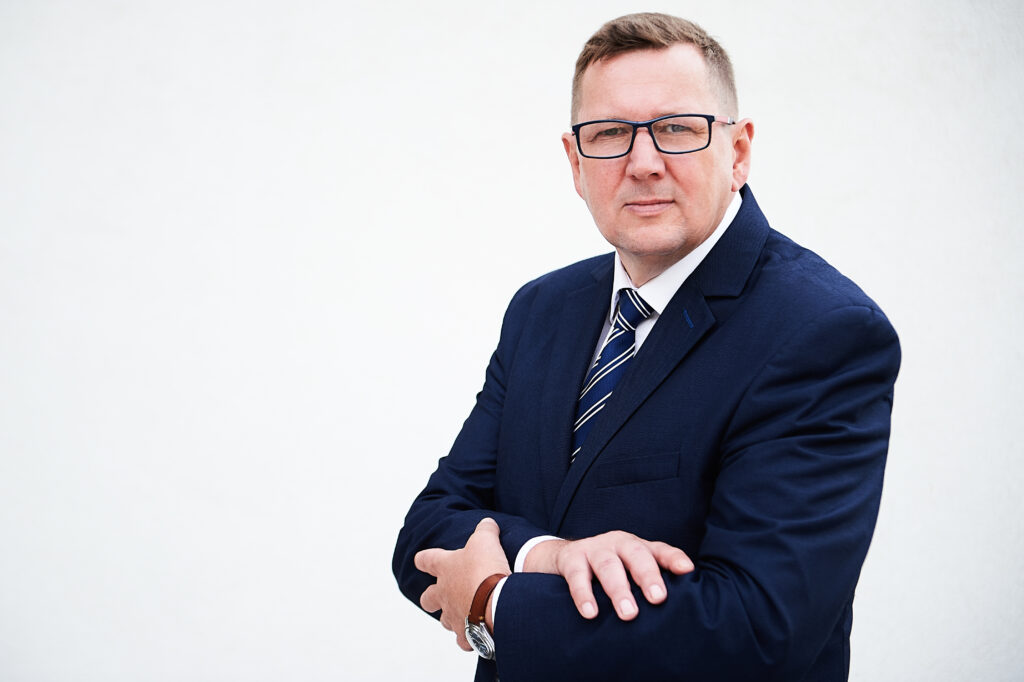Objective Data: The Key to Continuous Work Optimization
Dariusz Koczara has successfully implemented TMS solutions in multiple companies across diverse industries. For him, the cornerstone of optimizing work processes lies in obtaining precise, objective data about the actual performance of machinery.

You’ve implemented the TMS Platform in various companies. How did it all begin?
In 2007, while working as a chief mechanical engineer, I conducted an in-depth analysis of machinery operations across 16 open-pit mines. My previous experience taught me that only objective data on machinery performance could ensure proper maintenance and reliability. I sought a solution that would consolidate this information in one place. That’s when I discovered TMS.
At the time, the delivery of telemetry data to mobile mining machines was still in its infancy. What convinced you to pursue collaboration with TMS?
TMS had already developed solutions for transferring data via GPS/GSM directly from machines to servers. Another significant advantage was its compatibility with different types and brands of machines. I decided to deploy the TMS Platform on nearly 100 machines. Initial projections indicated a return on investment within 12 months, but we achieved it in under 11 months.
During deployment, we analyzed both machinery performance and operator behaviors. Surprisingly, for identical operations, fuel consumption varied by up to 30%. With this objective data, we began training operators and engaging them in discussions to improve efficiency.
Did the Platform evolve to meet your specific needs?
One challenge we faced was monitoring and analyzing the collected data effectively. TMS addressed this by generating customized, automated reports. These daily updates provided insights into operations, enabling operators to adjust their practices in real time. We analyzed entire processes and gained actionable insights, transforming how we managed machines. This integration of managerial strategies with ready-made analyses resulted in substantial savings.
It sounds like you moved beyond the typical customer-supplier relationship.
Absolutely. We collaborated closely with TMS, meeting quarterly to discuss successes, challenges, and new requirements. Together, we explored potential improvements and adapted the Platform to our evolving needs, co-creating innovative solutions.
Initially, the focus was on mobile machinery. Did you achieve additional benefit?
In the early stages, we optimized fuel consumption and processes. However, recognizing TMS’s flexibility, we expanded its use for managerial purposes. By integrating our KPI monitoring system, we began receiving precise data for all machines. This enabled us to analyze KPIs, identify the causes of failures, and enhance overall performance.
Did this lead to implementing TMS MES and integrating the Platform with processing plants?
Yes. We identified gaps in our understanding of processing plant operations. By gathering data from scales, control panels, and production lines, we gained comprehensive insights. In 2012, during the construction of a new plant, we installed the TMS Platform. It provided objective, reliable data, enabling real-time process optimization. This marked a significant shift toward performance-focused operations.
With small steps, you have transformed the mines into the digital age.
Initially, we had 16 quarries scattered across Poland, and our goal was to gain a comprehensive understanding of their operations and analyze their performance at the head office level. The primary focus throughout this process was to provide objective insights into the actual operational parameters.
This approach enabled us to take significant strides forward. A new plant was established and seamlessly integrated into the TMS MES Platform. Building on these experiences, we successfully implemented TMS MES across all production lines in Poland, automating KPI reporting in alignment with corporate standards. This transformation elevated the mines to an entirely new operational level. I am also deeply satisfied that our expertise and guidance were utilized by the Team in Romania, where, in collaboration with us, TMS solutions were successfully implemented across all the mines in the country.
After leaving open-pit mining, you introduced TMS to the recycling industry. How did that unfold?
Drawing on my experience and understanding of TMS’s capabilities, we initiated the implementation of the Platform across 10 locations in the recycling industry.
The core concept was once again centered on obtaining objective data about the performance of equipment such as cranes and shear balers, which were powered by either diesel or electricity. This enabled us to monitor KPIs and identify opportunities for further savings. We gathered critical information, including when the machines started operating, their working duration, and their fuel or electricity consumption. Based on this data, we began implementing optimization measures. The next stage of enhancements involved deploying a solution for analyzing individual cycles of shear balers. This effort not only expanded our metering capabilities but also introduced advanced analytical tools. These included graphical visualizations of the scrap crushing, ramming, and cutting cycles, as well as an additional set of KPIs, providing deeper insights into operational efficiency.
When you began implementing the system in a new location, did you adapt the Platform to meet the specific needs again?
Yes, the TMS lacked such solutions, so we once again explored ways to automate the entire process.
We also aimed to gain insights into the actual costs of transporting materials for customers and assess the profitability of our pricing for delivering a ton of scrap metal. To achieve this, we started monitoring the trucks transporting the scrap. The system provided detailed information, including the truck’s destination, the customer it was serving, the distance traveled, fuel consumption, and the time required to load the scrap using the HDS at the pickup site. Ultimately, it generated the data we needed to make informed decision.
How does the Platform assist you in your daily work?
Viewing the entire scope of working with a TMS, automation and the shift toward Industry 4.0 and 5.0 are essential. A significant advantage of the Platform is its ability to independently generate reports and insights without requiring human intervention at every step. The Platform also enhances operational efficiency by monitoring individual machines in real-time. It automatically sends SMS alerts and notifications to managers or foremen whenever an issue arises, enabling an immediate response and minimizing downtime.
.How would you rate your 18-year collaboration with the TMS team?
It’s been outstanding. TMS is a professional, forward-thinking partner. In my current role as Manager of the Energomachinery Department for a company serving KGHM, I’m exploring ways to implement TMS in underground operations—a challenging environment with limited internet and geolocation capabilities. Together, we’ll find innovative solutions.
Interviewed by Sabina Szewczyk-Wajda

Dariusz Koczara: an expert in automation and production process organization, Dariusz Koczara has contributed to companies like KGHM Polska Miedź S.A., Lafarge Holcim Polska S.A., and Centrozłom Wrocław S.A. He has collaborated with TMS for 18 years.